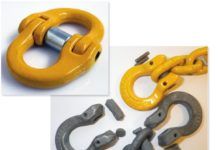How Does the Gulf Stream Influence our Weather?
“Big High, Blue Sky, Goodbye…” All you need to get started, right?
...Not so fast. Heed another quote from Captain Ron, hero of the 1992...
Can You Run a Marine Air-Conditioner on Battery Power?
Our 16,000 BTU MarinAire A/C is sufficient to maintain our Privilege 435 catamaran at under 26.5°C (80°F) on days up to around 35°C (95°F)....
Preparing Yourself for Solo Sailing
Last week, I covered some of the things I suggest you need to think through on the boat before heading out solo. Now, what...
Your New Feature-Packed VHF Radio
In the ever-evolving realm of maritime communication, Digital Selective Calling (DSC) and Automatic Identification System (AIS) have emerged as game-changers within the latest models...
Preparing A Boat to Sail Solo
You have probably heard people say sailing solo is dangerous or irresponsible. How can you keep a proper watch? What happens if you have...
Solar Panels: Go Rigid If You have the Space…
Movies can be corny, but Jack Sparrow nicely summarized the romance of sailing: Thats what a ship is, you know. Its not just a keel and a hull and a deck and sails, thats what a ship needs but what a ship is ... what the Black Pearl really is... is freedom.
Leaping Into Lithium
Your dock neighbor just switched out her old 12-volt lead-acid batteries for lithium-ion batteries. Should you? The lithium solution will be more expensive, but...
The Importance of Sea State in Weather Planning
We all want a crystal ball that tells us exactly what we will be in for during a passage, however long or short it...
The Tricked Out Tillerpilot
Self-contained tillerpilots are a simple and darn handy means of steering a smaller sailboat, particularly when sailing solo. For the singlehander a tillerpilot is...
Resolving Common Steering Problems
Your steering packed it in and you are stuck with either your emergency tiller or an emergency rudder and tiller. These often require the...


















































